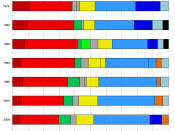Institutional aspects of E(S)CBTopic: Institutional aspects of E(S)CBTheses: The E(S)CB after being established to complete the common monetary and exchange policy is obligated to respect the important institutional aspects such as Independence, Transparency and Accountability; however they are not always respected.
IntroductionWhat is E(S)CBa. Its structureb. Its role and objectivesThe institutional aspects of E(S)CBc. Independence÷Institutional independence÷Legal independence÷Personal independence÷Functional and operational independence÷Financial and organizational independenced. Transparencye. AccountabilityAre institutional aspects totally respected?V. ConclusionInstitutional aspects of ESCBI. IntroductionAfter many years of work towards a monetary integration, from Bretton-Woods regime, European Payments Union (EPU), European Monetary Agreement (EMA), ÃÂSnake in the tunnelàto European Monetary System, finally the European Monetary Union was created. In the centre of the European Monetary Union stays the common currency between the member states to further integrate the EU into a single market. Central monetary authority was needed. This authority, according to the Treaty, was the European Central Bank (ECB) which was established to complete the common monetary policy and exchange rate policy.
The ECB together with the National Banks of the member states form the European System of Central Banks. In order to better perform their functions they should respect some basic institutional aspects such as Independence, Transparency and Accountability. But do they always respect them?II. What is E(S)CBECB was created in June 1998 after its originator the European Monetary Institute. As mentioned before ECB was created as a need after the establishment of the common currency. It is an organization that conducts the monetary policy and performs other important functions for the common currency. ECB together with the NCBs form the ESCB.
From the creation of ECB the countries can not perform their own monetary policies any more. A common goal is that the economies of the member states move in the same direction.
The well functioning...


